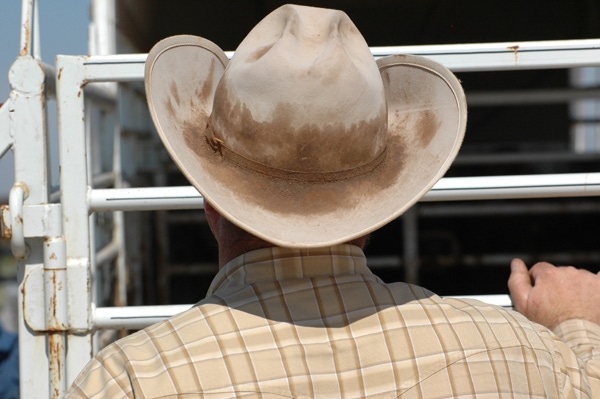June 25, 2015

Ask about challenges facing day-to-day agriculture and near the top of the list you almost always hear about labor. While much of ag’s labor needs tend to be part-time or seasonal, today I’m going to talk more about full-time employees.
Hiring the right person for small companies becomes critical because the future of the organization may depend on it. Perhaps you’ve read the books that advocate finding great talent and then creating a role for them. That is great advice in principle, but most ranch operations need to hire people to fill roles that need filling. Thus, it is critical that the hiring decision is a good match.
I have no data to support this, but the average rancher puts in what most Americans would consider to be incredibly long hours. Indeed, agriculture is a lifestyle and it tends to be almost 24/7. Of course, that comes with a certain amount of flexibility as well.
For employees, the average work week may be 50-60 hours, but with less flexibility. That’s because some aspects of agriculture will not change—when the feed truck breaks on Sunday morning, you fix it; when you have 50 cows to breed on a hot June evening, you start late and you go until the job is done.

BEEF Seedstock 100
Looking for a new seedstock provider? Use our BEEF Seedstock 100 listing to find the largest bull sellers in the U.S. Browse the Seedstock 100 list here.
That makes it a challenge to create a lifestyle or culture for employees that will allow them to truly enjoy their work while finding balance with other aspects of their lives. We may have to check heifers at 2:00 a.m. when it is 30 below zero, but few of us do a great job of asking ourselves if our employees are getting a similar level of enjoyment from their job as we are.
In our operation, we realize that great people produce great companies. Ironically, while we may spend hundreds of hours on other management objectives, we have spent very little time trying to determine how we create great people. From personal experience, we have made hires that cost us huge amounts of time and money. We have also been fortunate to find some truly good individuals.
The business books talk about things like cultural fit, and hiring people smarter than yourself, but we have learned to focus not only on attitude but also common sense, real-world experience and efficiency. One bad hire can be devastating to a small business. There is something wrong if you spend twice as much time evaluating your new herd sire as you do deciding who to hire.
We have a tendency to wax eloquent about the problem of finding labor, complaining about the product that our land grant universities are turning out, the work ethic of younger generations and so on. But when asked how we go about employee recruitment, hiring, compensation, training, culture, et al, we simply have a blank look. If it is truly the problem we all believe it is, shouldn’t we be spending more time on it than we are?
As a wise old veteran told me that you can’t keep from getting rich if you hire enough talented people who create more value than they cost. Most of my epiphanies in this business have come from my failures. When it comes to labor, I’ve found the biggest problem wasn’t with potential employees; it was issues with the boss and company. As we begin to address those problems, I think we will find the labor issue is not a challenge but rather a significant competitive advantage.
The most difficult thing for me to understand is that employees in some respects are like cattle. If I mismanaged them too terribly in the beginning, they became unmarketable (cattle) or unprofitable (people), even if they had tremendous potential in the beginning. Nothing hurts worse than knowing you are culling an animal or encouraging an employee to seek opportunities elsewhere simply because your mismanagement has caused that individual to fail.
The bell shaped curve will always ensure that some cattle simply will fail and need to be culled. Good hiring and management, on the other hand, should virtually eliminate the need to replace employees because of job failures. Now that we are focusing on the right problem, hopefully we can make labor not one of our greatest challenges but instead one of our greatest opportunities.
You might also like:
60 stunning photos that showcase ranch work ethics
Picture perfect summer grazing scenes from readers
7 U.S. cattle operations honored for stewardship efforts
How to prevent foot rot in cattle
What's the least expensive way to breed cows? It might not be what you think
About the Author(s)
You May Also Like



